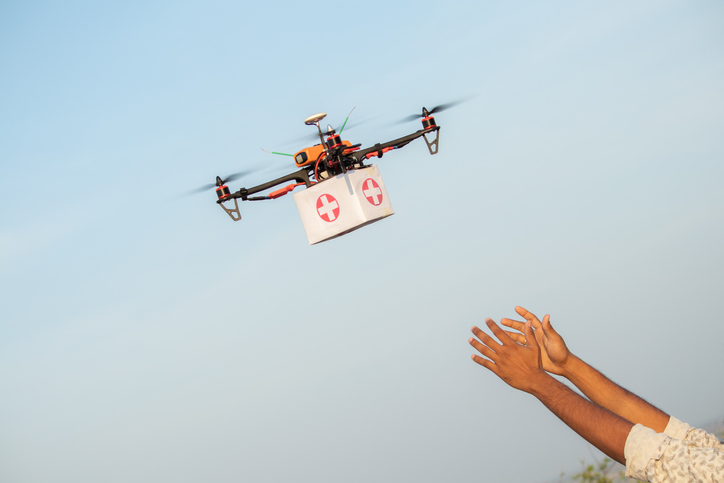In the northern hemisphere, the winter months are beginning to draw in, so what better time to sit around the metaphorical fire for another Ophthalmology Innovation Summit (OIS) webinar. The online events series organized by the OIS have rapidly become a staple of the ophthalmology industry during the coronavirus era, bringing together a large number of ophthalmology professionals to discuss and highlight specific industry issues.
On November 6, the OIS held its latest webinar in the series, this time focusing on drug delivery and included nine start-ups operating in that sector. Lasting over 2.5 hours, the webinar was split into two sections, with the first featuring a series of presentations by the nine featured startups.
Proceedings kicked off with Dr. Sharon Bakalash, the founder & CEO of SB Strategic Development Consultants (Keller, Texas, USA), which focuses on ophthalmic business development. Dr. Backlash laid the groundwork for the webinar by presenting a market overview and described how the future of advanced drug delivery technology had already arrived.
The ultimate crux of Dr. Bakalash’s presentation was one question: “Will you be a truck or a Porsche?” This especially applies to companies in the transition from spec-pharma to biotech, where trucks represent spec-pharma’s low valuation and crowded landscape, and porches represent the high risk, yet high reward, value of biotech. She also added that investors are showing particular preference for event-driven investments in new technologies.
Bionics are Already Here
Following Dr. Bakalash’s opening remarks the showcase took on a round robin format, with each presenter speaking for around 10 minutes. First up was Dr. Francine Behar-Cohen, the founder and chief innovation officer of Eyevensys. Based in Paris, France, Eyevensys offers a drug delivery platform that claims to turn the eye into a biofactory.
It uses gene therapy technology that sustains expression of therapeutic proteins in the eye. Eyevensys’s EYS809 dual gene plasmid product is promoted by the company as an improvement on “the limited efficacy of current anti-VEGFs. ESY809 is currently at the preclinical stage of development and is the subject of multiple strategic discussions.
Eye Point Pharmaceuticals (Watertown, Massachusetts, USA) CEO Nancy Lurker was next to present her company’s operations and products. Of particular note was the Durasert device, designed for sustained release delivery. The device releases small molecule drugs into the back of the eye and has applications in uveitis, daibetic macular edema and retinitis.
Lurker also showcased her company’s EYP-1901 six-month sustained release anti-VEGF product candidate. Using the Duraset, EYP-1901 transfers the tyrosine kinase inhibitor vorolanib. During a phase one trial, 60% of patients did not require rescue injections, and baseline visual acuity was maintained. Eye Point Pharmaceuticals is planning to expand its study with more patients.
A Celtic Burr from Belfast
The presentations then took on a decidedly Celtic flair as Scottish businessman Michael O’Rourke, CEO of Re-Vana, took the online stage. His company is based in Belfast on the island of Ireland, and is a technical spinout of Queen’s University in the same city. It is described as a drug delivery company developing unique, crosslinked sustained release technologies, treating the multibillion dollar market of eye diseases.
By May 2020, Re-Vana had already received capital of $3.25 million from ExSight Ventures, InFocus Capital and Visionary Ventures. This reportedly represents the first time that all three major ophthalmology venture capital companies invested into one firm. Re-Vana’s EyeLief is a prefabricated, pre-loaded drug delivery system, and the OcuLief is a gel-based delivery system that can release a wide variety of drug profiles.
Fred Guerard, the CEO of Graybug Vision (Redwood City, California) was next up. Graybug Vision is a clinical stage pharmaceutical company developing novel products for the treatment of ocular diseases. Guerard presented his company’s programs primarily focused on retinal and glaucoma treatment.
The GB-102 and GB-103 retinal programs are proceeding at the first human studies stage and thus far, 44% of patients report no drug adverse reactions. GB-401 for glaucoma is demonstrating sustained intraocular pressure reduction and has potential for at least six months duration in ocular hypertensive rats. A phase 1/2a study is planned for the second half of 2021.
From Belfast to Boston
At the halfway point, the presenters were joined by Dr. Kenneth Mandell, the CEO of Layerbio (Boston Massachusetts). This clinical-stage company, from the Massachusetts Institute of Technology, has raised $8 million through collaborations and grants. Layerbio focuses on cataract surgery and produces the OcuRing-K.
This device is a ketorolac implant and is designed to replace nonsteroidal anti-inflammatory drugs (NSAIDs) in cataract surgery. The OcuRing-K is compatible with any intraocular lens and is reported to avoid the side effects usually caused by NSAID use during cataract treatment. According to Dr. Mandell the device demonstrated safety and efficacy during a phase one trial, and phases two and three have already been planned.
Calling in all the way from Melbourne, Australia, was Dr. Russell Tait, the CEO of Polyactiva. A clinical-stage ophthalmology company, Polyactiva works in a variety of areas; however Dr. Tait primarily focused his presentation on glaucoma. His company recently carried out a phase 1 study on an ocular implant designed to be placed in the anterior chamber of the eye.
Polyactiva is also researching a post-surgical antibiotic designed to reduce the risk of bacterial endophthalmitis. A phase 1 study began in October of this year, and will investigate the efficacy of this bolus dose antibiotic, released over five to seven days. It is single-use and biodegradation occurs within eight days.
Occidental Ophthalmology
Dr. Damon Smith was up next, presenting in his role as the CEO of TALLC (Quebec, Canada). The company describes itself as a pioneering preclinical-stage pharmaceutical company developing novel mechanism NCE drugs as anti-inflammatory and analgesic medicines. Dr. Smith’s primary subject during his presentation was the Smart Celle TA-A001, a potent postoperative analgesic.
This product is a novel mechanism designed for keratoconus surgery and is applied topically one to three days after surgery. Dr. Smith reports it has superior potency and patient outcomes compared with NSAIDS, and reduced scarring and corneal haze, too. TALLC is seeking tranched investment funding of $6 million to finish the manufacturing process, as well as preclinical studies.
Eyedrop innovation has been something of a hot topic of late and is a particular focus for American company Kedalion Therapeutics (Menlo Park, California, USA). The company’s Chairman, CEO and Co-Founder Dr. Mark Blumenkranz, believes that the AcuStream is the solution to topical troubles. The device is a horizontal, multi-dose, preservative-free horizontal delivery system.
The AcuStream includes a number of innovative features including microbe-free testing, smart connected technology and consistency across viscosities. Dr. Blumenkranz reports that the AcuStream has achieved significant results in presbyopia trials, and proof of concept micro dose trials took place, including in myopia and glaucoma patients. Thus far Kedalion Therapeutics has raised $45 million in series B funding.
Finally, the last presenter was Dr. Sean Ianchulev, a professor of ophthalmology at the New York Eye and Ear Infirmary. Dr. Ianchulev is also the CEO of Eyenovia (New York City, USA)), the creator of the Optejet. This device uses micro-array print technology that claims to reduce corneal exposure to drugs by 80% while also ensuring no preservative toxicity.
The Optejet is extremely easy to use and can even be operated by a child, as was demonstrated during the presentation. The device is also highly accurate, with Eyenovia claiming that other delivery systems can overdose by over 300%. The company estimates its gross margins as lying within 70-90%.



